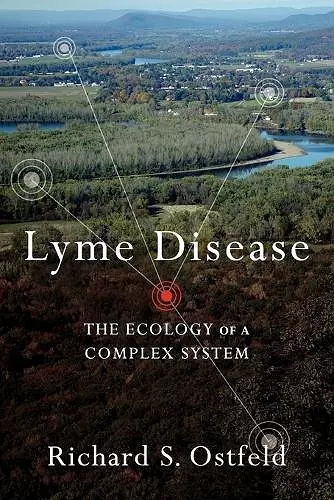Lyme Disease
The Ecology of a Complex System
Format:Paperback
Publisher:Oxford University Press Inc
Published:12th Jul '12
Currently unavailable, and unfortunately no date known when it will be back
This paperback is available in another edition too:
- Hardback£62.00(9780195388121)

Most human diseases come from nature, from pathogens that live and breed in non-human animals and are "accidentally" transmitted to us. Human illness is only the culmination of a complex series of interactions among species in their natural habitats. To avoid exposure to these pathogens, we must understand which species are involved, what regulates their abundance, and how they interact. Lyme disease affects the lives of millions of people in the US, Europe, and Asia. It is the most frequently reported vector-borne disease in the United States; About 20,000 cases have been reported each year over the past five years, and tens of thousands more go unrecognized and unreported. Despite the epidemiological importance of understanding variable LD risk, such pursuit has been slow, indirect, and only partially successful, due in part to an overemphasis on identifying the small subset of 'key players' that contribute to Lyme disease risk, as well as a general misunderstanding of effective treatment options. This controversial book is a comprehensive, synthetic review of research on the ecology of Lyme disease in North America. It describes how humans get sick, why some years and places are so risky and others not. It challenges dogma - for instance, that risk is closely tied to the abundance of deer - and replaces it with a new understanding that embraces the complexity of species and their interactions. It describes why the place where Lyme disease emerged - coastal New England - set researchers on mistaken pathways. It shows how tiny acorns have enormous impacts on our probability of getting sick, why biodiversity is good for our health, why living next to a small woodlot is dangerous, and why Lyme disease is an excellent model system for understanding many other human and animal diseases. Intended for an audience of professional and student ecologists, epidemiologists, and other health scientists, it is written in an informal style accessible also to non-scientists interested in human health and conservation.
"Researchers and graduate students interested in ecological and population aspects of Lyme disease will find value in this concise, well-argued booklet, with its clear historical account of Lyme disease epidemic, an up-to-date list of primary citations on Lyme disease ecology, and a rich source of ecological hypotheses for future studies. Especially, I recommend this volume highly to graduate students and researchers entering the field of ecology of enzootic infectious disease (Lyme disease, in particular) for its values in both as an introductory text of the field and as a vivid and inspiring guide on how to build a successful research career by being a contrarian and iconoclast." -- New Biological Books
ISBN: 9780199928477
Dimensions: 231mm x 155mm x 15mm
Weight: 340g
232 pages